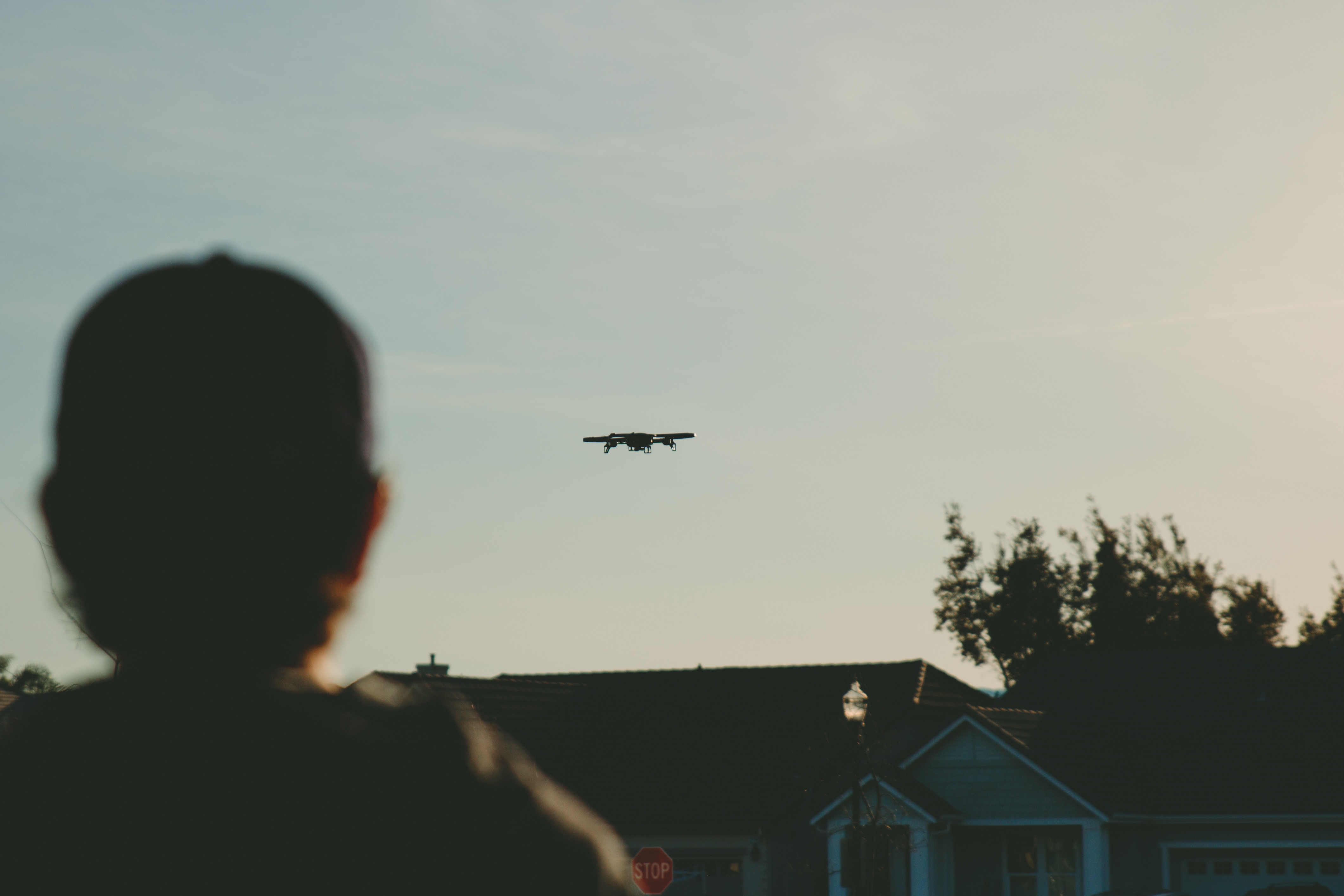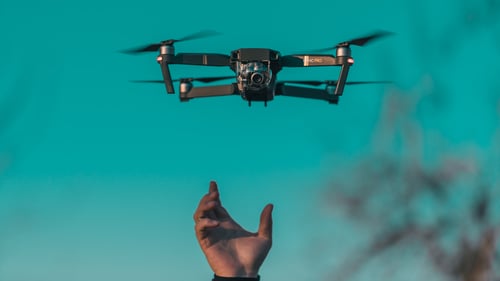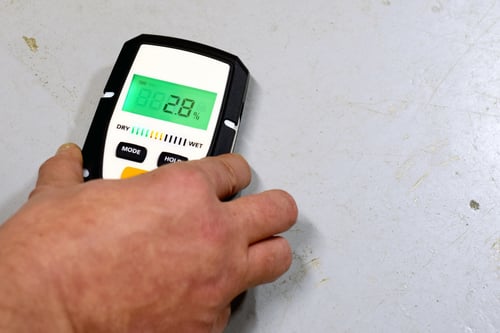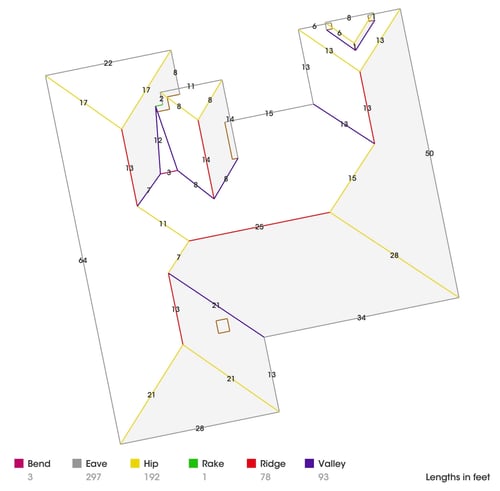What Roofing Technology is Used During an Inspection?
May , 2023 | 6 min. read

Roofing inspections: yawn. We know, it may not sound like the most exciting activity in the world. Still, when you consider the cutting-edge technology used by estimators, it can be pretty cool. After all, if you’re going to have a roofing professional invading your home or business space, the least they can do is make it cool, right? From infrared cameras to drones and satellite imaging, these high-tech tools are like something out of Inspector Gadget’s many cyborg devices.
Okay, maybe it’s not that cool, however, roofing technology has continued to evolve over the years, helping to provide homeowners with a seamless (and intriguing) inspection. Over the past several decades, the team at RoofCrafters has been incorporating these tools into our everyday work, and we’ve found that when we don’t fight technological evolution, and instead work side by side as one singular unit, roofing inspections are completed with ease and are precise every time.
That being said, if you’re reading this article, you probably have a few questions about the technology that will be used to carry out your next inspection. While not every roofing company uses these tools, it’s still useful information to remember. In just a few short moments, you’ll learn what various roofing tools are used to assist estimators during their inspections, as well as how the experts put them to work. So, without further ado, “go-go Gadget!” Too cheesy?
What Roofing Technology is Used During an Inspection?
During a roofing inspection, various technologies can be used to assess the condition of the roof and identify any potential issues. Some of the most common roofing technologies used during inspections include:
- Drones: Drones equipped with high-resolution cameras can capture detailed roof images from various angles. This technology can help identify areas of damage or wear that may not be visible from the ground.
- Infrared (IR) Scanners: IR scanners can detect temperature differences on the roof's surface, which can indicate areas of moisture intrusion or insulation deficiencies.
- Moisture Meters: Moisture meters can measure the moisture content of various roofing materials, such as insulation, plywood, and drywall. By measuring moisture levels, inspectors can identify areas of potential water damage and determine the extent of any existing damage.
- Satellite Imaging: Satellite imaging can provide detailed images of a roof's surface, which can be used to assess the roof's condition and identify potential issues. This technology is particularly useful for large commercial or industrial buildings.
Drones
Drones are becoming increasingly popular for roofing inspections due to their ability to capture detailed images of a roof's surface from various angles. Equipped with high-resolution cameras, drones can provide a bird's-eye view of the roof, allowing estimators to identify areas of damage or wear that may not be visible from the ground. During a roofing inspection, a drone is typically flown over the roof to capture high-definition images and videos of the entire surface.

The images captured by the drone can be analyzed to identify issues such as cracked or missing shingles, areas of wear and tear, and signs of water damage. Drones are particularly useful for inspecting large or complex roofs, such as those on commercial or industrial buildings. They can cover a large area quickly and efficiently, and help to assess the condition of the roof more accurately and in less time.
IR Scanners
Infrared (IR) cameras are commonly used during roofing inspections to detect temperature differences on the surface of the roof, which can help identify areas of moisture intrusion or insulation deficiencies. During an inspection, the IR camera is used to capture images of the roof's surface, which are then analyzed to identify temperature variations.
IR cameras can detect temperature differences as small as 0.1 degree Celsius, allowing estimators to identify areas of potential water damage, leaks, or other types of damage that may not be visible to the naked eye. Moisture intrusion can often lead to the growth of mold or other harmful organisms, which can compromise the structural integrity of the roof and pose health risks to the building's occupants. By using IR cameras, inspectors can identify these potential issues early on and take corrective action before they become more serious.
IR cameras can also be used to identify insulation deficiencies, which can cause energy inefficiencies and result in higher heating and cooling costs. The cameras can detect temperature differences between well-insulated and poorly insulated areas of the roof and identify areas where insulation may need to be improved.
Moisture Meters
Moisture meters are frequently used during roofing inspections to measure the moisture content of various roofing materials, such as insulation, plywood, and drywall. Moisture meters are essential for detecting areas of potential water damage, which can compromise the structural integrity of the roof and lead to other issues such as mold growth. During a roofing inspection, the moisture meter is used to take readings at various points on the roof's surface, as well as inside the building or home's walls and ceilings. These readings provide inspectors with valuable information about the moisture levels of the roofing materials and any adjacent structures, such as walls and ceilings.

If high levels of moisture are detected, your estimator can investigate further to identify the source of the problem and take corrective action before the moisture leads to more significant damage. For example, if moisture is detected in the insulation, it may be an indication of a leak in the roof, which can be repaired before it causes more extensive damage to the roof or the building's interior.
Satellite Imaging
Satellite imaging is a powerful tool that can be used during roofing inspections to provide a comprehensive overview of the roof's condition. Estimators can view the roof from above and identify areas of damage or wear and tear that may not be visible from the ground. Satellite imaging is particularly useful for inspecting large or complex roofs, such as those on commercial or industrial buildings, providing the estimator with exact dimensions.
The high-resolution images captured by the satellite can be analyzed to identify issues on homes as well, such as cracked or missing shingles, areas of wear and tear, and signs of water damage. Satellite imaging can also help estimators identify potential hazards such as loose or unstable roofing materials, without the need for physical access to the roof.
Will My Estimator Be Using These Tools During My Inspection?
The specific tools and technologies used during a roofing inspection will depend on the estimator or roofing company you choose to work with. However, the estimator will likely use a combination of tools and technologies to thoroughly assess the condition of your roof and identify any potential issues. It's important to choose a reputable and experienced roofing company that uses modern and up-to-date inspection techniques and tools to ensure that you receive an accurate assessment of your roof's condition.
Be sure to ask your estimator or roofing company about the specific tools and technologies they will be using during your inspection so you have a better understanding of the process and the information you can expect to receive, and remember that not every roofing company is as technologically advanced as Mr. Gadget himself.
If you’re struggling to find the best contractor for the job, be sure to download “The Top 10 Most Critical Questions You Want to Ask Your Potential Roofing Contractor”. This checklist includes several different prompts to ask your roofer to prepare you to hold the company accountable for its quality of work and services when it comes to your upcoming roofing inspection.
My name is Cassie, and I’m the Content Manager here at RoofCrafters. I was born and raised in Chicago, Illinois, and made my way out to Florida post-college graduation. I’m incredibly passionate about writing and creating valuable content that helps others with the collaboration of my marketing team. When I’m not working, I enjoy shopping (a little too much), spending time at the beach, and reading!



